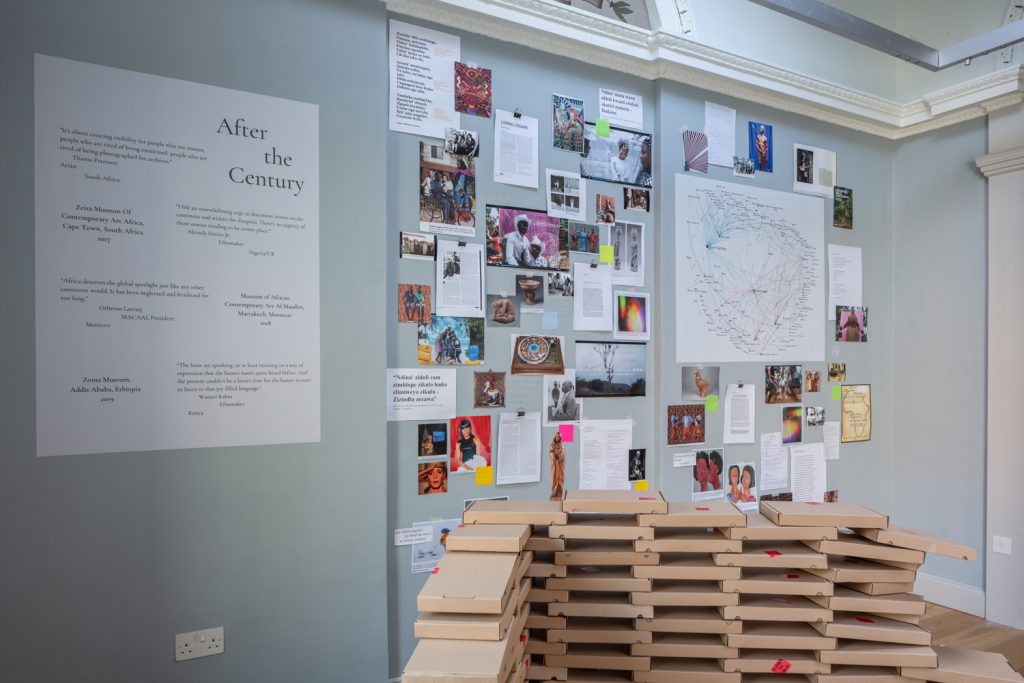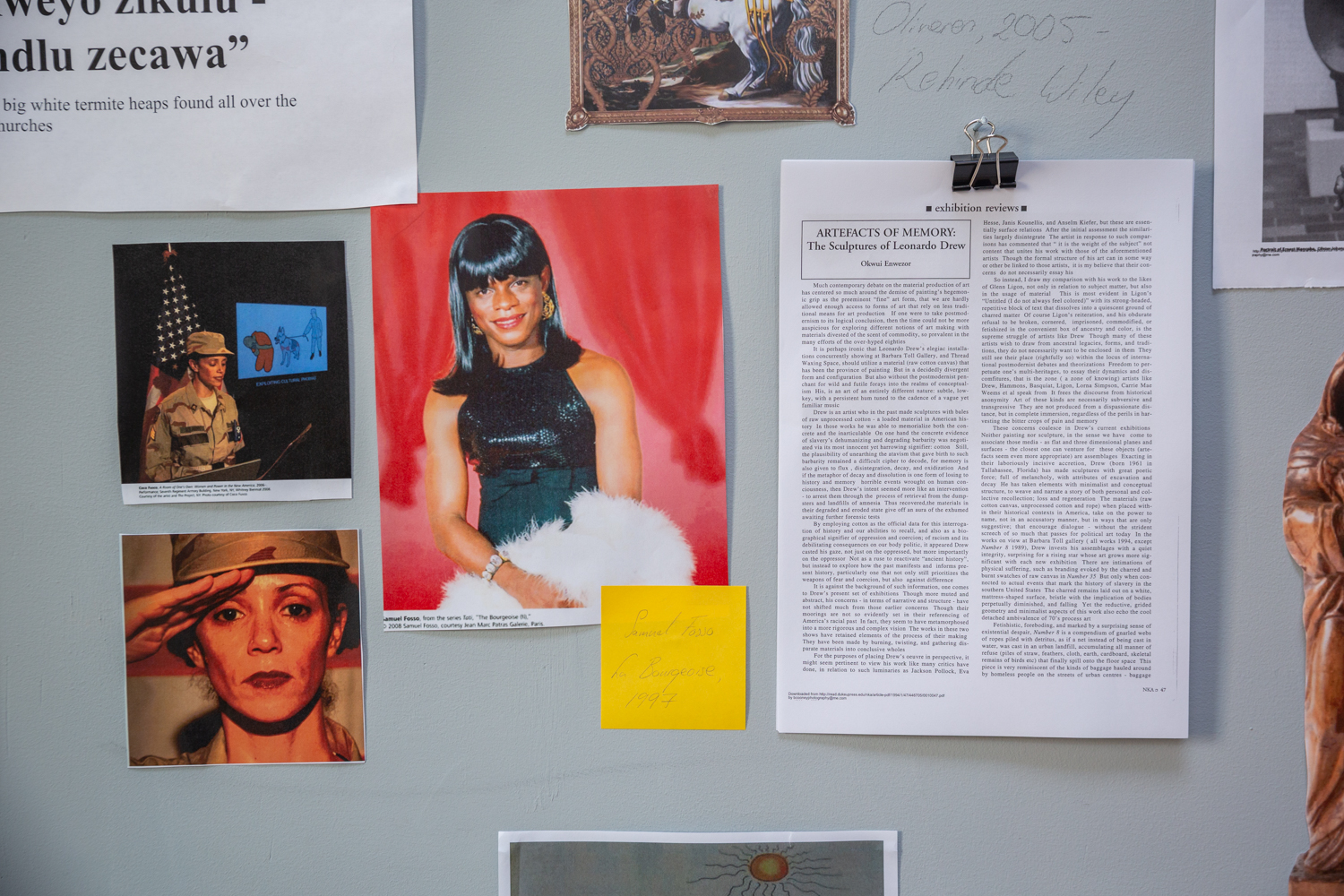Simon Bhuiyan, Brian Cooney, Kristen Olson, Aisling-Ór Ní Aodha
After the Century focuses on research conducted around The Short Century exhibition by Okwui Enwezor. The presentation displays the multiplicity of African modernism in a mix of mediums and methods, echoing Enwezor’s approach in his 2001 and 2002 shows.
Installed on the Return Gallery’s south wall, After the Century consists of collaged images, quotes, texts and other findings that emerge as the group’s mediation on The Short Century. It aims to inhabit the multiplicity of African modernism that Enwezor invested his research in, as well as point to the present moment of contemporary art on the continent. A web-like graph displays the multi-faceted method of The Short Century, spanning the 59 artists involved, their 22 countries of origin and the partial colonial history of each country. Both ‘formal’ and ‘informal’ display methods are used, from vinyl posters to sticky notes, masking tape, handwritten notes and printed documents.

The group’s frequent conversations around related questions of Irish post- colonialism/imperialism is presented in a fictionalized brochure that imagines events that could have taken place alongside The Short Century had it travelled to Ireland. The document attempts to interrogate the insular understanding of colonialism within Ireland and the potential for The Short Century to challenge Irish narratives and beliefs about the past and present by placing the two postcolonial locations in an overlapping sphere.
In 2001, the survey exhibition on African modernism The Short Century: Independence and Liberation Movements in Africa, 1945–1994 was exhibited at the Museum Villa Stuck, Munich. The exhibition then traveled on to Martin-Gropius-Bau in Berlin, and again in 2002 to Chicago’s MCA and New York City’s MoMA PS1. The exhibition was curated by the Nigerian art critic, writer, poet, curator and educator Enwezor and was the first to exhibit the array of African visual art, music, architecture and textiles that are tightly bound to the various African independence movements of the 20th century. Within the exhibition, Enwezor interrogated the emergence of African Modernity and its interrelation with independence.
“I think the exhibition is self-sufficient in terms of what it provides,” said Enwezor in an interview with Carol Becker about these shows. “Even I, as curator of the show, am overwhelmed when I walk through it because it has such an incredible emotional resonance. The exhibition has been designed to be inside the head of the visitors, what I call the tide of voices moving back and forth, carrying you forward, stopping you. It’s an experience that a book cannot provide.” (Art Journal, 2002)


